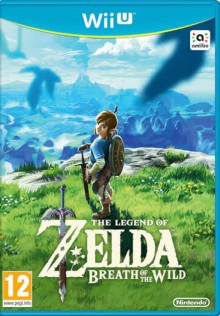
For many years before the advent of The Legend of Zelda: Skyward Sword on Wii, the control scheme for the franchise in 3D by-and-large remained consistent, making use of analogue stick movement and trigger-targeting techniques, together with equipment-defined buttons and a fairly linear dungeon-to-overworld system. Majora's Mask mixed up the latter nicely with a three day limit and a bustling town in fear of being obliterated, and the freedom of the ocean sailing in The Wind Waker HD looks set to wow a new generation of Nintendo fans.
Skyward Sword arguably did the most to mix up these standards of the franchise; not only basing the hub-world in the sky, but making the environments before each dungeon act like as standalone dungeon sections. Nintendo put more emphasis on item usage outside of their respective origins, using items in tandem on the field, as well as inside the dungeons. Not only that, but the expressions and mannerisms of the characters made for an emotive game even without proper voiced narrative.

That's before even mentioning the controls, which have probably done more to split the opinions of the fan-base far more than Wind Waker's art style or Twilight Princess' familiarity in relation to Ocarina of Time. For better or worse, Skyward Sword's Motion-focused approach gave heroes one-to-one control over a blade and the items equipped alongside it, making for unique and more imaginative puzzles and enemy fights.
The layout of the game, with collectables and dungeon tropes still soured many looking for a more refreshed Zelda title, but the majority agreed that the freedom of motion control should be carried forward into future games.
Looking at the Wii U's primary control input, it would be difficult to see how this could happen. As versatile as the GamePad may be, its motion capabilities would not allow the freedom of a Wii Remote, and would inevitably return to a more conventional setup from older titles in the franchise. Is there a way to combine the two, perhaps?

As an opinion piece, this suggestion is admittedly out of personal preference, but seeing and playing Nintendoland's Zelda Battle Quest mini-game might have provided the solution. Both control options for a one player game are separated for use of ease, but imagine if they were combined?
Imagine holding the Wii U GamePad with one hand, be it your left or right, giving access to an Analog stick for character movement, two shoulder buttons for targeting and dodging, and 4 face buttons (or a D-Pad) for items switching/other purposes.
Holding the controller in this way and resting it on your lap to avoid hand strain frees up your other hand to wield the Wii Remote. Using the remote this way not only eliminates the cord of the nunchuk; but gives full freedom to use it like a sword once again and allows the superior speed of the pointer to come into play for targeting arrows and hook-shots.

But what of the GamePad's touch screen? Well, the feeling of actually holding a dungeon map in your hands could be well replicated, as is moving all main-screen indicators like the health and magic bars onto it to provide a more cinematic experience. And holding up the pad to use the shield if you so desire… why not?
Skyward Sword had to balance the complexities of a MotionPlus-enhanced Wii Remote and a basic gyro-equipped nunchuk, so puzzles were fairly one-sided in that respect. With this dual-setup, you have two devices that are fairly well matched, and thus allow greater flexibility. That's to say nothing of transport possibly, like the reigns of a Horse or giant Bird. Naturally this potential scheme could complicate a few things. Off-TV play for example, which can be remedied by moving the sword options to the second analogue stick as a trade-off would be not as accurate, but functional enough. Plus since there is no guarantee that each Wii U owner has a Wii Remote+ hanging around, Nintendo would likely have to provide one with the game like with Skyward Sword, but by that point manufacturing costs for remotes should be dirt cheap anyway.

Of course, there were other considerable factors that dulled the Skyward Sword experience for many, which Nintendo would be wise to focus on outside of the control scheme, but one like this could satisfy not only the purists and Motion converts, but those also seeking a newer way to play.

How do you want to control the new Legend of Zelda game? Have your say in the poll below.

 Sign In
Sign In 25.08.2013
25.08.2013  Game Details
Game Details
 Out now
Out now  Out now
Out now  Out now
Out now  Out now Also on
Out now Also on 
 SirLink
SirLink 
 Link to this post:
Link to this post: 
 Subscribe to this topic
Subscribe to this topic Features
Features





 Top
Top

